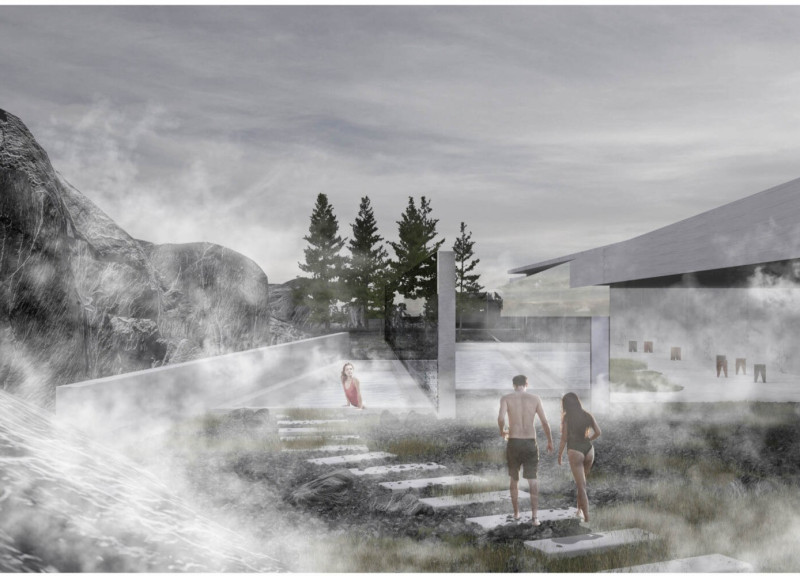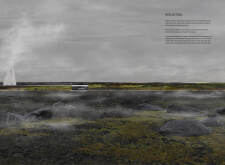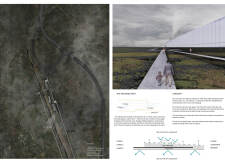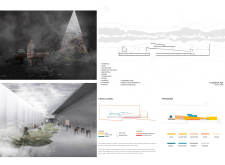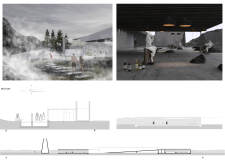5 key facts about this project
Unique Design Approaches
The Reflection Tower employs a layered approach to its architectural design, incorporating concrete, glass, and mirror elements. This strategy creates a visual dialogue between the structure and its setting, allowing the building to blend into the landscape. The use of glass facades maximizes natural light while providing unobstructed views, thus extending the sense of space outdoors. Mirrors strategically positioned around the structure enhance these reflections, further integrating with the surrounding scenery.
The tower's vertical element, which houses the sauna, provides panoramic views of the landscape, encouraging visitors to engage with their environment. A well-designed walking path connects various functional areas, guiding users through the site and inviting them to explore its features. This path emphasizes the relationship between the built environment and natural topography, further establishing the project’s connection to its geographical context.
Material Selection and Sustainability
The materials chosen for the Reflection Tower reinforce its architectural intent. Concrete provides structural integrity and durability, forming the backbone of the building. Wood elements contribute warmth and comfort, creating inviting spaces for visitors. The focus on local materials reduces the carbon footprint, aligning with sustainable design principles.
The architectural strategy prioritizes passive design elements, such as natural ventilation and daylighting, minimizing energy consumption. This approach reflects an understanding of the local climate and the ecological impact of construction, reinforcing the project's commitment to sustainability while ensuring efficiency in operation.
Readers interested in understanding the architectural plans, sections, and designs of the Reflection Tower are encouraged to explore the project presentation further. Engaging with the architectural ideas presented will provide deeper insights into the innovative designs and unique characteristics that define this project.


